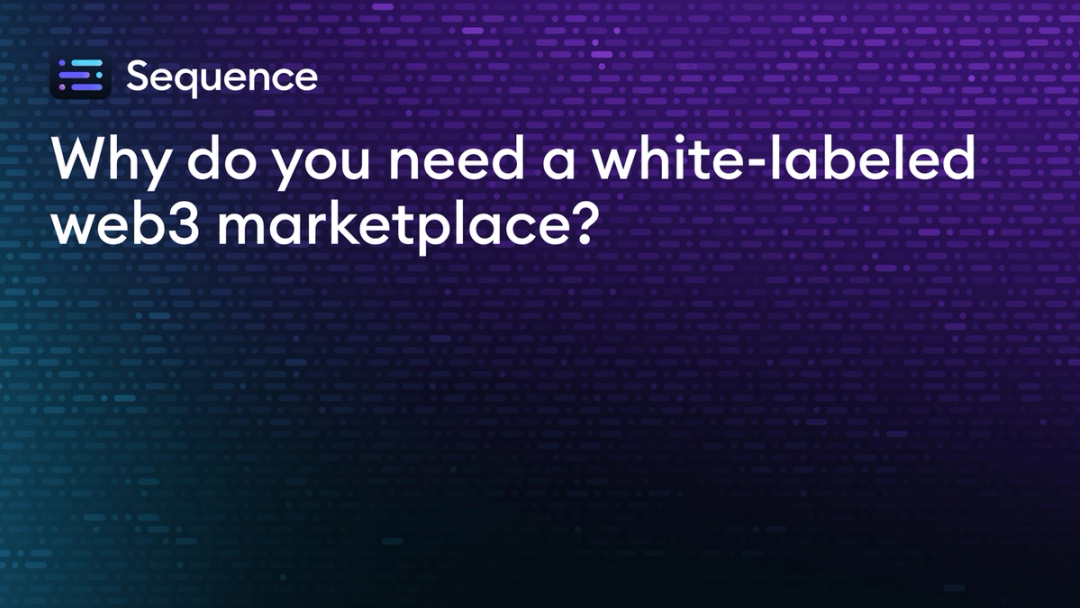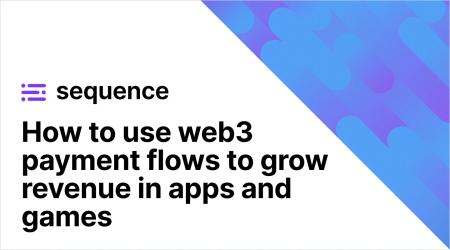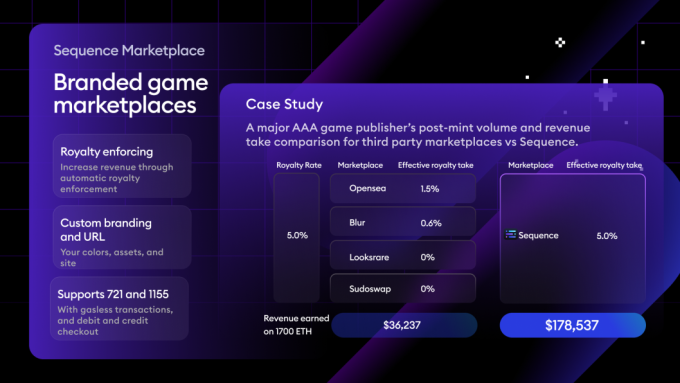Why do you need a white-labeled web3 marketplace?
August 25 2023

It is a time of consolidation within web3. A time most players in the space were expecting to happen - it was not a matter of if, but a matter of when. Amid significant changes in the web3 third-party marketplace ecosystem is a growing recognition by brands, game developers, and consumers: they want marketplaces that are native to the experience and interface of the game or brand.
Digital collectibles and items are still at the core of the web3 economy, but these recent shifts require brands wishing to enter the space to answer: What revenue and engagement are lost by relying on external platforms to distribute and trade digital collectibles, versus handling them on a native platform?
Web3 marketplaces are shutting down - why?
Several web3 marketplaces in the past month declared they were winding down their operations due to challenges posed by crypto winter, and other major marketplaces have seen large collections leave their platforms. But the market is still top-heavy, with more than 90% of digital collectibles and items trade volume currently being handled by three web3 platforms.
These recent events unveiled the limitations of the traditional web3 marketplace model in the context of digital items that are increasingly meant for in-house utility rather than secondary market trading.
Despite their significant investments and multifaceted roles, web3 marketplaces still lack the power to influence the long-term utility and strategies of IP licensors (and, therefore, the perceived secondary market value). This limitation has so far hindered their ability to determine how these items would contribute to future strategies—whether they would evolve into tickets, merchandise access, or game pieces, for example.
These platforms are now more than ever subject to market forces outside of their control, yet ironically, it’s the brands and game makers who are ultimately risking consumer sentiment in scenarios where licensed IP collectibles programs are run on third-party marketplaces that may close.
Established web3 marketplaces enter survival mode - do brands have a choice?
Not only have established marketplaces had to close down, but some of those remaining had to make major policy changes in regard to digital collectibles. OpenSea recently announced that it is undergoing significant changes to its creator royalty fee structure. Historically, digital collectibles promised artists a portion of proceeds with each resale, but OpenSea's alteration shifts this paradigm. Starting March 2024, resale fees will transition into optional tips, enabling sellers to decide whether to compensate the original creators.
Responses to OpenSea's decision have been mixed. Critics argue that the alteration disadvantages small artists and impairs creators' control over their relationships with buyers. Some creators, who had planned their businesses around enforced royalties, perceive OpenSea's move as detrimental. Others view the change as a necessary evolution in response to shifting market dynamics. In response, Yuga Labs (the owners of Bored Ape Yacht Club), announced that they were pulling their collections from OpenSea.
No matter whether this decision can be considered right or wrong, the problem is that each web3 business that leverages external web3 marketplaces will have no other choice but to abide by their policies. Is this fair given market conditions?
What’s the future of third-party marketplaces?
As applications of NFTs expand beyond collectibles and into game items, loyalty program points, access passes, and more, the nature of how and why users may interact with third-party marketplaces is changing, which creates implications for IP holders and creators, too.
Usage vs. speculation: As on-chain items have more utility than secondary market value, consumers’ needs may shift from investment-focused actions (where margins are everything) Having no royalties is a benefit to traders, but not creators.
Experience ownership: With more web3-based programs integrating into the core businesses of game developers, brands, and media companies, consumers are increasingly expecting that their marketplaces match with native experiences and branding. Creators also want to centralize the engagement on platforms they own and can customize.
Greater control vs. risk: Third-party marketplaces which may pivot, shut down, or change policies put brand and IP holders at greater risk since negative consumer sentiment is likely to fall on the perceived creators, instead of the marketplaces.
The power of white-labeled marketplaces
Skyweaver white-labeled marketplace
In response to these challenges, the digital collectibles landscape is moving towards in-house solutions that redefine current dynamics.
Central to this transformation are white-labeled marketplaces. On one hand, they offer the flexibility to tailor the collectibles' experience and a cohesive interface for users, while also giving web3 businesses the freedom to nourish their brand and to be the owners of policies affecting their economies and consumers
Usage vs. speculation: White-labeled web3 marketplaces empower businesses to transcend trends and focus on their core narratives and programs. This facilitates continuity and a cohesive experience that companies can more easily integrate natively into their existing games, apps, and ecosystems.
Experience ownership: White-labeled web3 marketplaces that authentically integrate collectibles within the brand's identity contribute to sustained engagement. In-game marketplaces like the one from the web3 card game Skyweaver drive over 90% of all transactions, which means not sharing third-party marketplace fees, and not losing on trading by moving players to experiences outside of the native game.
Greater control vs. risk: White-labeled solutions grant brands much more power over the policies concerning their marketplaces. For example, the decisions concerning how digital collectibles are minted and traded, or whether to apply secondary royalty fees.
To conclude
The landscape of web3 and digital collectibles is undergoing a significant transformation, driven by both market forces and the decisions of major players. Recent happenings underscore the challenges faced by traditional web3 marketplaces, emphasizing the need for adaptable solutions and strategies.
Amidst these changes, the importance of white-labeled web3 marketplaces emerges as a solution to address the challenges of sustainability, integration, and decision-making power. These platforms offer businesses the flexibility to shape their collectibles' experience while maintaining their brand identity and control over policies. By embracing white-labeled solutions, web3 brands can ensure continuity beyond short-term trends and foster sustained engagement.
Sequence makes building onchain simple. Developers and teams can launch, grow, and monetize apps with unified wallets, 1-click cross-chain transactions, and real-time data, all in a modular and secure stack. No more stitching together fragmented tools or battling poor user flows. Sequence is production-ready infrastructure that helps teams ship faster, onboard more users, and scale confidently. From chains and stablecoins to DeFi and gaming, Sequence powers developers and applications across the EVM ecosystem with billions in transaction volume and millions of users. Trusted by leaders in blockchain, Sequence powers today’s onchain apps and delivers future-proof infrastructure for tomorrow’s breakthroughs. Learn more at sequence.xyz.
Written by

Nicola Fraccaroli
Content Marketing ManagerRelated Posts

Today marks a major milestone: Polygon Labs is acquiring Sequence.

A short guide that explains exactly what gasless transactions are, and why they matter for your web3 experience.

In partnership with KOR Protocol, Sequence and Msquared, Black Mirror's franchise has launched the $MIRROR token and a new web3 experience!

Web3 payment flows allow any app to embed onchain purchases and interactions in a way that feels natural for users. Learn more about them!

